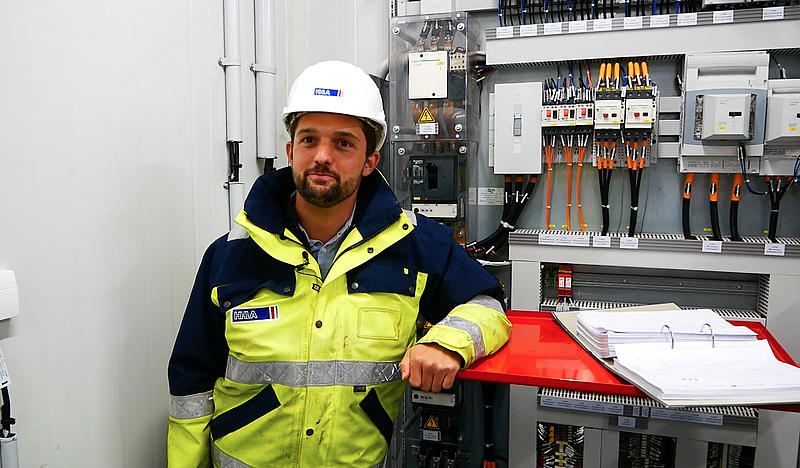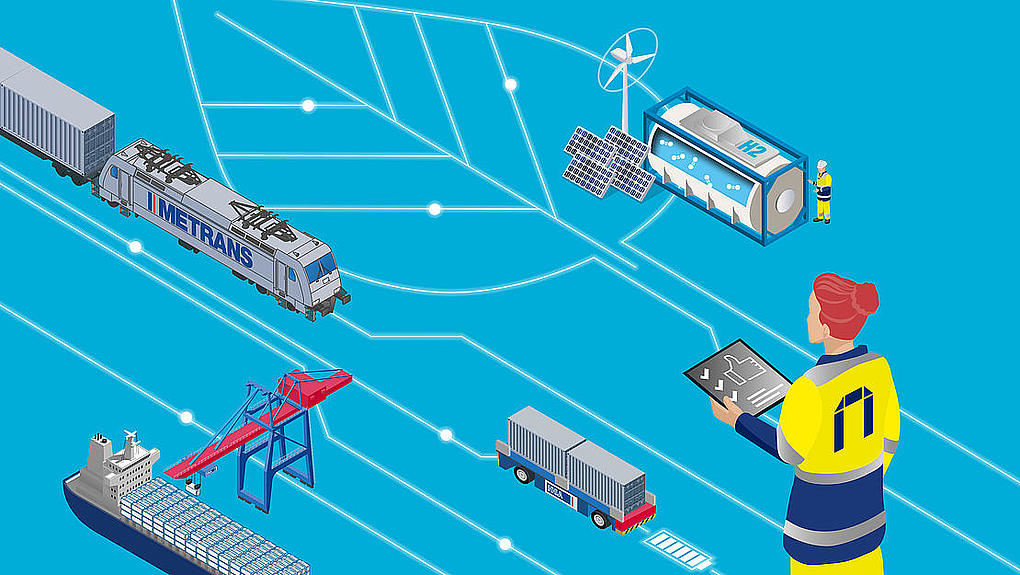On his way into the office at HHLA Container Terminal Burchardkai (CTB), Thomas Hanau almost always drives across the Köhlbrand Bridge. He is always enthralled by the view across his beloved port. “I will miss this bridge when it’s no longer with us,” Hanau says. And this day is drawing nearer – the cable-stayed bridge is due to be dismantled soon. Otherwise, the container ships and their constantly increasing masses would no longer be able to approach the terminal in Altenwerder.
Container ships are growing
The increasing size of container ships is Hanau’s main concern in his work at HHLA. In simple terms, if the ships continue to grow in height and width, the existing container gantry cranes will no longer be able to load and unload them. As a result, they are progressively being replaced with larger gantry cranes. A qualified business administration manager and technician, Hanau is responsible for the electrical planning of these massive machines.
It was only with far-sighted and ongoing investments by HHLA in gantry crane technology that the HMM Algeciras, currently the biggest container ship in the world with a capacity of 24,000 standard containers, was able to call at the Port of Hamburg this year. Whenever this colossus calls at Hamburg on its round trip between Asia and Europe, up to 14,000 containers need to pass from the ship to the quayside and back within the shortest possible time. This can only be done with the biggest gantry cranes in the business, which are able to unload several containers at the same time with a single motion.
Huge technology
The largest container gantry cranes at the Port of Hamburg are working at Terminal Burchardkai (CTB). Are you interested in the technical data?
Via what is known as a tandem hub, a crane operator can move two 40-foot containers or four 20-foot containers simultaneously. In order to access every container on the ship, the boom on the gantry crane extends 80 metres into the dock. This makes it possible to position the spreader even on the outermost edge of up to 26 rows of containers. “The lifting height has also been noticeably increased to 49.5 metres,” says Hanau. Three new cranes are already in operation at CTB. Another is undergoing a field test and the fifth is under construction.
No downtime
This fifth gantry crane already has an operational lift, which is something that Hanau is particularly pleased about. When he last visited Chinese manufacturer ZPMC in Shanghai in the heat of summer, Hanau had to climb the 60 metres up to the cab on foot.

Sustainable lighting
Hanau leads the visitor to the driver’s cab via a metal footbridge. The moveable driver’s seat is attached to the ceiling to provide a clear view of what is happening below through the glass floor. “The air supply system is ready to go into operation. When it’s working, it will result in a slight overpressure in the cabin,” explains Hanau. This will prevent any ship fumes from entering the cabin.
Hanau’s job doesn’t just begin with the delivery of container gantry cranes to the port. “Around 480 days pass between ordering and delivery,” he explains. But before the order is even placed, the experts at HHLA have to put together the specifications. They contain what the container gantry crane needs to be able to do.
Hanau and his colleagues investigated where the biggest potential savings could be made for container gantry cranes as part of the HHLA sustainability initiative. “Incredibly, it’s in terms of their lighting,” Hanau says.

People work at the terminal around the clock. The employees working on the container gantry cranes need clear visibility of their working area. Previously, gas discharge lamps illuminated the working area. Their output was enormous and the lamps had to be replaced every three to four years.
The new container gantry cranes use high-efficiency LED lamps with lenses to focus the light exactly where it is needed. These lamps only use a fraction of the energy and practically last forever – or at least as long as the container gantry cranes, which are generally in operation for up to 25 years.
A Westphalian in the north
The 36-year-old’s career has been like this. Born in North Rhine-Westphalia, he joined HHLA in 2008 and immediately felt at home in Hamburg. “My brother was studying up north and we visited the city together. It was clear to me that I wanted to live here,” he says.
After training as a mechatronics engineer, Hanau garnered his initial work experience outside of Hamburg. He then completed advanced part-time training at HHLA as a technical management expert.
Today, Hanau is reviewing upcoming projects as a business administration manager and expert at HHLA Technik. Electrical technology and automation are his core areas of expertise and his desk is littered with technical drawings for the next project. But he still has time to glance out of the office window occasionally. Here, on the sixth floor at CTB, he has a unique view across the gigantic container ships and the Köhlbrand Bridge.